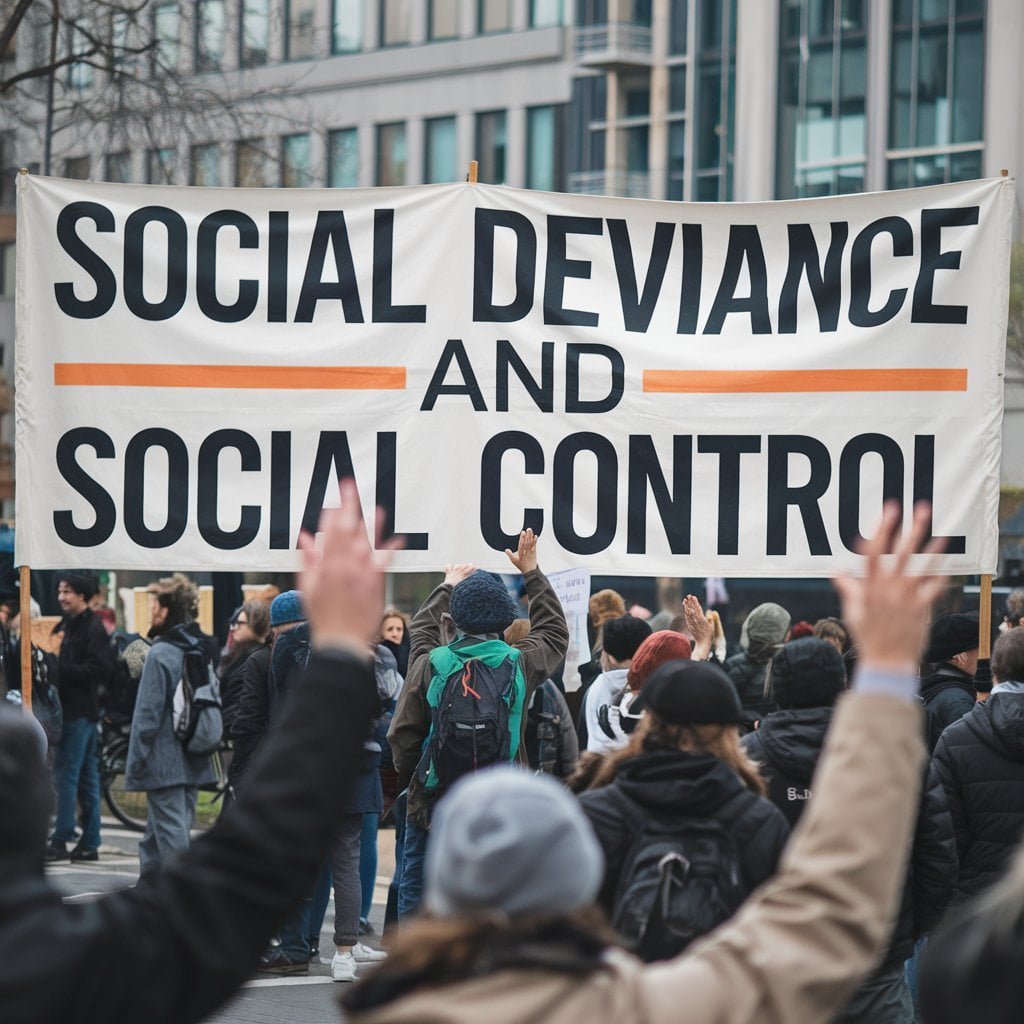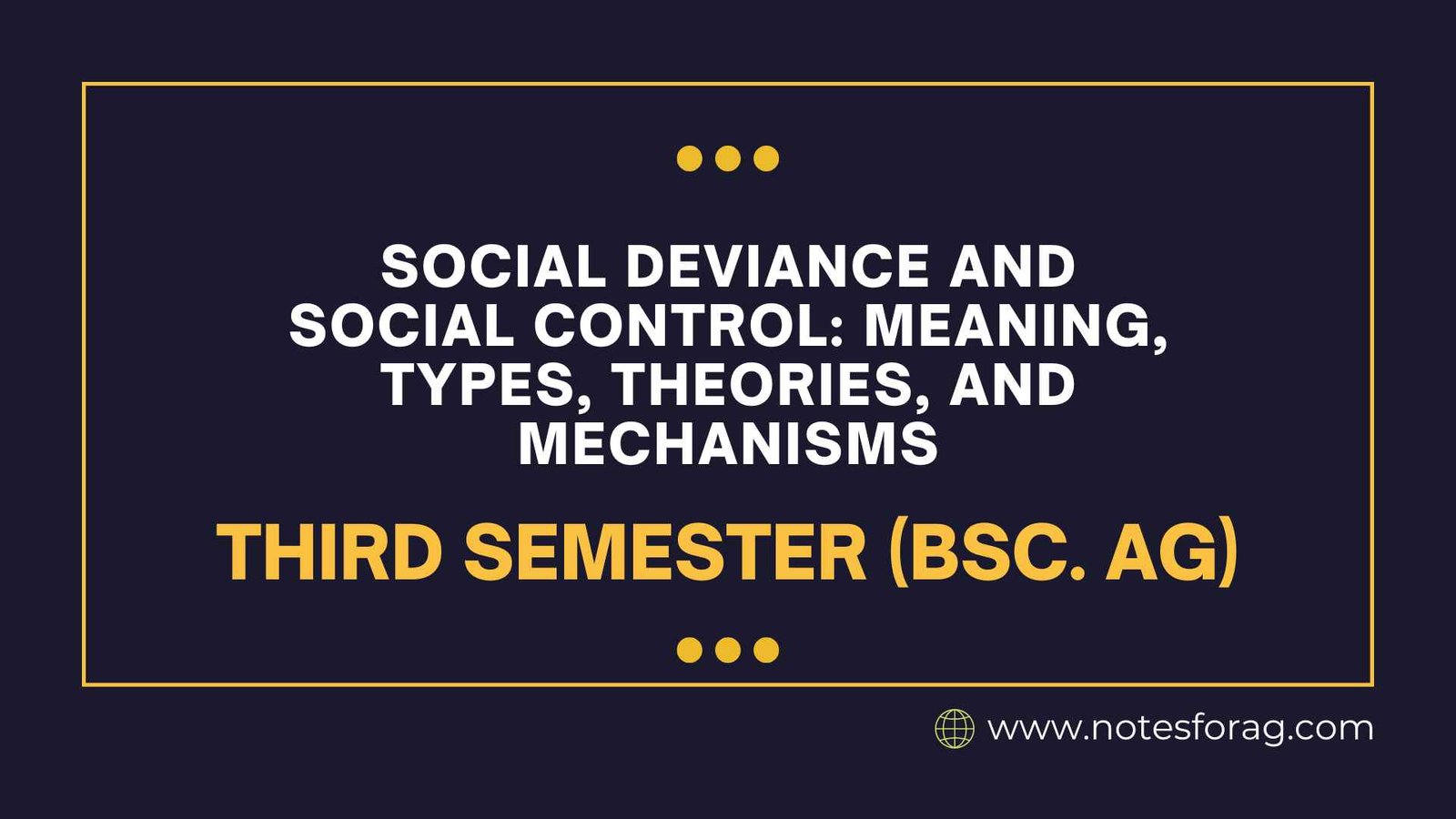Social deviance refers to activities that go against societal norms and expectations, ranging from small rule violations to more significant criminal acts. Social control refers to the official and informal processes used to govern conduct and maintain order. Deviance can be classified as primary, secondary, or positive, and control can be official or informal. Theories such as strain, labeling, and control theory explain why deviation arises, whereas methods such as punishment, rehabilitation, and socialization help to enforce social norms. Deviance and control influence social order and individual conduct.
Table of Contents

What is Social Deviance?
Social deviance refers to behaviors, ideas, or conditions that violate established societal standards and expectations. These norms, which determine what is suitable or acceptable, can vary greatly based on cultural and societal settings. As a result, social deviance is intrinsically context-dependent and can involve a wide spectrum of activities, from minor infractions to serious violations of society standards. Deviance is not inherently negative; it simply refers to activities that differ from recognized societal norms. What is considered deviant varies by society, subculture, and time.
What is Social Control?
Social control refers to the processes, strategies, and structures that society use to manage individual conduct and ensure adherence to its standards and regulations. It is vital for keeping order and avoiding disorder. Social control is exercised through both official (rules, regulations) and informal means (customs, peer pressure).
Types of Social Deviance
Social deviance encompasses a wide array of behaviors that violate societal norms. These deviations can be categorized into various types, which help clarify the scope and nature of deviance in a given context.
1. Primary Deviance: This refers to modest, typically temporary acts of deviance that do not cause a person to be branded as deviant by society. For example, breaching a traffic law or missing class once.
2. Secondary Deviance: When a person is classified as deviant after repeatedly committing deviant activities, they begin to internalize this label, which shapes their identity and behavior.
3. Positive Deviance: Involves actions that break from standards yet are regarded as morally or socially beneficial (for example, civil rights activism that challenges unjust laws).
Types of Social Control
1. Formal Social Control:
- Formal social control refers to the official processes used by institutions like governments and corporations to enforce laws and keep order.
- Examples:
- Law & Legal Systems: Governments develop and enforce laws to govern behavior, which can result in fines, imprisonment, or other legal penalties.
- Regulations and Policy: Institutions such as schools, workplaces, and corporations use policies to guide behavior, and infractions result in disciplinary action.
2. Informal Social Control:
- Individuals, families, and communities exercise informal social control through the use of social norms, practices, and values. It is less regimented than formal control and frequently includes subtle demands to conform.
- Examples:
- Family and Peer Pressure: Families and friends shape people’s behaviors through approval, rejection, or social expectations.
- Cultural norms and traditions: Individual conduct is guided by social norms, beliefs, and values, which promote adherence to societal standards.
Theories of Social Deviance
Understanding social deviance requires a comprehensive examination of various sociological theories that provide insight into why such behavior occurs and its implications on society. Each theory presents a unique perspective, enriching the discourse around deviance and social control.
1. Strain Theory (Robert Merton):
Strain theory provides an additional perspective through which to view deviation. This thesis, based on the works of Robert Merton, contends that society structure can produce pressures that force individuals to explore deviant means in order to obtain culturally acceptable goals. As a result, the systems of social control determine who is considered deviant and how society reacts to such behavior. Each of these theoretical frameworks helps to provide a more nuanced understanding of the complex nature of social deviance and its widespread impact on society.
2. Structural-Functionalism:
According to structural-functionalism, deviation provides an important social role. According to this idea, deviation is a normal occurrence that can help to maintain social stability by reinforcing established norms. Emile Durkheim, a pioneer in this field, maintained that the presence of deviation helps to define acceptable behavior, hence promoting social cohesiveness. This viewpoint contends that a certain level of deviation is required for society health, allowing for adaptability and evolution.
3. Conflict Theory:
Conflict theory emphasizes the importance of power dynamics in analyzing social deviance. This hypothesis, based on Karl Marx’s writings, contends that social disparities are frequently the cause of deviation. It contends that people in authority decide what constitutes deviance, so marginalizing particular groups while keeping control over societal norms. This viewpoint emphasizes how social deviation might reflect greater struggles between social classes and resistance to enforced societal standards.
4. Symbolic Interactionism:
Symbolic interactionism examines the subjective meanings and definitions individuals assign to their actions. According to this theory, deviance is a label imposed by society on an act rather than an inherent characteristic. From this perspective, the labeling process, as examined in labeling theory, can result in self-fulfilling prophecies, in which individuals internalize society labels and acquire deviant identities. The relationship between society perception and personal identity highlights the complexities of social deviance.
Mechanisms of Social Control
Social control refers to the methods and strategies utilized by societies to regulate individual behavior, ensuring adherence to established norms and expectations. The mechanisms of social control includes:
- Punishment and deterrence: Criminal laws, legal punishments, and sanctions serve as a deterrent to deviant behavior by threatening undesirable outcomes.
- Rehabilitation: Programs and interventions designed to assist individuals in changing their behaviors and reintegrating into society.
- Socialization: The process by which individuals acquire society norms, attitudes, and behaviors from their families, peers, and institutions. Proper socializing helps to prevent deviant conduct.
- Surveillance: Authorities or technology monitor conduct in order to deter misbehavior. This can range from police patrols to digital surveillance systems.
- Stigmatization: Social criticism and ostracism can be effective instruments for curbing transgression. Individuals who defy standards may be rejected, creating pressure to comply.
Social deviance refers to acts that violate societal norms, whereas social control encompasses the processes that promote conformity. Deviance can be classified as primary, secondary, or positive, and social control might be formal or informal. Theories such as strain, conflict, and symbolic interactionism explain why deviance develops, whereas methods such as punishment, rehabilitation, and surveillance help to govern social control.
Frequently Asked Questions
What is social deviance?
Social deviance refers to behaviors, activities, or conditions that violate societal norms, standards, or expectations. It can range from minor matters rule violations to significant criminal action, depending on the society’s standards.
How does deviance contribute to social change?
Functionalist theory holds that deviation can promote social change by challenging obsolete norms and promoting transformation. Positive deviance, such as civil rights movements, frequently promotes society progress by calling for justice and equality.
Related Articles

